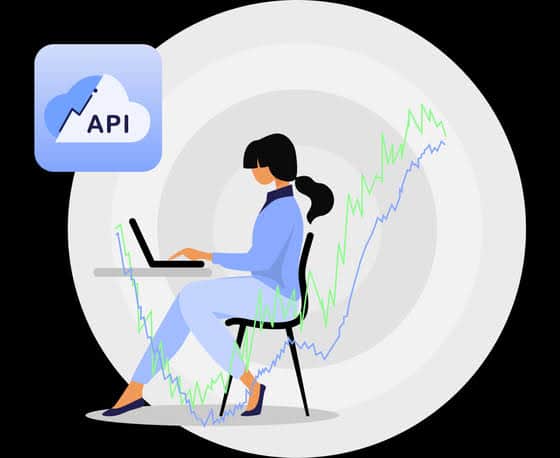
Introduction
You can use currency exchange rate data to understand the impact of fluctuations in your business’s finances. This guide will walk you through collecting, cleaning up, and analyzing exchange rate data to get insights into your business’s finances.
Get the latest exchange rate data
You can get exchange rate data from the following sources:
- An exchange rates API
- A website that lists currency exchange rates
- A spreadsheet on your computer, which you can access online or download to your hard drive and use offline
- A database application, such as Microsoft Excel or Access
Clean the data
There are a few ways to clean the data. First, remove any unwanted data. For example, you may want to get rid of any rows that aren’t relevant for your analysis. If you want to focus on the exchange rate between USD and CAD, you can exclude all rows where the currency pair is not USD/CAD.
Second, remove duplicates using a unique value function such as distinct() or unique(). You can use this function on both column names and values (i.e., currency pairs). This will ensure that each row has its own unique set of values for each column—meaning that if there are multiple entries for one particular currency pair in one row (for example USD/CAD 10007 and USD/CAD 10009), these two different entries will become two separate rows after filtering out duplicates with distinct() or unique().
Third, use an outlier detection technique like median absolute deviation or Grubbs test to find outliers in your dataset so they don’t affect your analysis results too much when included in calculations like regression analyses or descriptive statistics.
Explore trends
You can use data from this analysis to better understand the trends in the exchange rates of your currency. For example, if you look at the exchange rate data for the Japanese yen against the US dollar over several years and see that it has been increasing steadily since 2011, you might want to predict what will happen next. Suppose your currency’s value is currently low compared to another country’s currency. In that case, an increase in their GDP could lead to more people buying goods made by your country—and therefore cause an increase in demand for your country’s goods and services; this would cause its value relative to other currencies (like USD) but also increase its value overall as people become willing…
Find outliers
When looking at historical exchange rate data, you must understand that you will find outliers. Outliers can be caused by errors or fraud and can also signify a new trend. In general, the more experience you have in analyzing exchange rates, the easier it is to spot outliers. You should look for outliers when:
An extreme value does not fit the overall pattern of prices or currency movements
A single transaction or large number of transactions appear at an unusual time
The price of one currency suddenly rises or falls significantly without any underlying market reason (such as interest rate changes)
Currency trends help you understand your business’s finances
Currency trends help you understand your business’s finances. Currency trends help you predict future exchange rates and can help you understand the impact of exchange rates on your business.
Read: Jaiz Bank USSD Code for Mobile Banking And How To Use It
Analyzing Currency trends with python
To analyze exchange rates with python, you will need to use the ‘requests’ and ‘BeautifulSoup’ libraries. First, you will need to install these libraries. We will be using the ecb as a data-source. You can do this using pip: pip install requests pip install beautifulsoup4 Once these libraries are installed, you can begin writing your code. First, you will need to import the libraries: import requests from bs4 import BeautifulSoup Next, you will need to specify the URL that you want to scrape. In this case, we will use the URL for the European Central Bank’s exchange rates page:
url = “https://www.ecb.europa.eu/stats/policy_and_exchange_rates/euro_reference_exchange_rates/html/index.en.html”
Now, you can use the ‘requests’ library to fetch the HTML from the URL:
r = requests.get(url)
Once the HTML is fetched, you can use the ‘BeautifulSoup’ library to parse it:
soup = BeautifulSoup(r.text, “html.parser”)
Now that the HTML is parsed, you can use BeautifulSoup’s built-in functions to find the exchange rates. In this case, we will use the ‘find_all’ function to find all of the table rows that contain exchange rate data:
exchange_rates = soup.find_all(“tr”, class_=”even”) Now that we have a list of all the exchange rates, we can loop through them and print out the currency and the rate: for rate in exchange_rates: currency = rate.find(“td”, class_=”currency”).text rate = rate.find(“td”, class_=”rate”).text print(currency + “: ” + rate) T
his code will print out something like this:
USD: 1.1172 JPY: 129.48 BGN: 1.9558 CZK: 25.545 DKK: 7.4433 GBP: 0.89755 HUF: 323.85 PLN: 4.2995 RON: 4.6612 SEK: 10.345 CHF: 1.0857 ISK: 140.2 NOK: 9.7075 HRK: 7.3955 RUB: 68.905 TRY: 6.3075 AUD: 1.5365 BRL: 4.2795 CAD: 1.5135 CNY: 7.6845 HKD: 8.7755 IDR: 15895.0 ILS: 3.9555 INR: 75.545 KRW: 1295.8 MXN: 21.495 MYR: 4.665 NZD: 1.6495 PHP: 58.345 SGD: 1.5455 THB: 37.95 ZAR: 15.895
As you can see, this code prints out the currency and the rate for each currency. You can then use this data to analyze the exchange rates.
Conclusion
The above is a short guide on how to analyze exchange rate data. As you can see, there are many benefits of doing this kind of analysis and it can help you make better decisions when it comes to your finances.
